100 days of heroes: Artist’s life cut short
EVERY death in World War I was a tragedy but if there was ever a prime example of the damage it did to the potential of a whole generation, Keith Eltham is it.
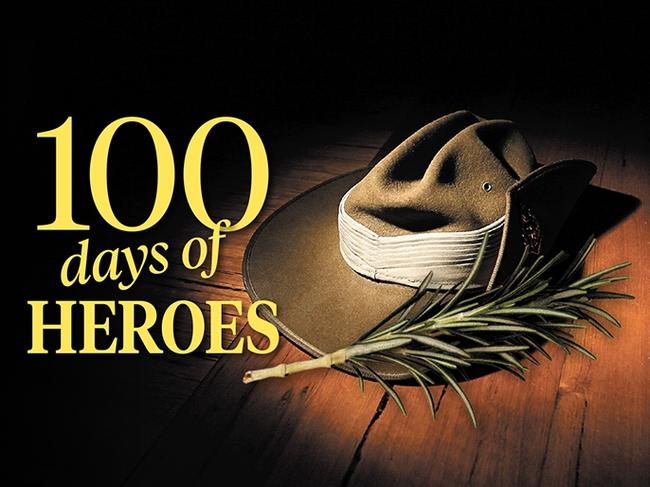
Tasmania
Don't miss out on the headlines from Tasmania. Followed categories will be added to My News.
EVERY death in World War I was a tragedy but if there was ever a prime example of the damage it did to the potential of a whole generation, William Keith Eltham is it.
The youngest son of William and Jane Eltham was a talented man. Sharing the same given names as his father, he was generally known as Keith rather than William.
Born in 1886 and educated at Queens College and the Hobart Technical School, Keith found work as a draftsman with the Hobart City Council.
He was not only a keen athlete playing several sports and representing Tasmanian cricket interstate and overseas, he also sang in the Orpheus Choir and appeared in vaudeville-style productions.
Keith was also a cartoonist and talented sketcher. Some of his artwork was published in newspapers and books, as well as the poetry and essays he enjoyed writing.
MORE 100 DAYS OF HEROES:
BERT SCURRAH WENT FROM FRONT PAGE TO FRONT LINE
ROBERT THORPE AND HAZEL OUTTEN’S LOVE STORY
FOOTBALLER ALLSEBROOK MADE THE ULTIMATE SACRIFICE
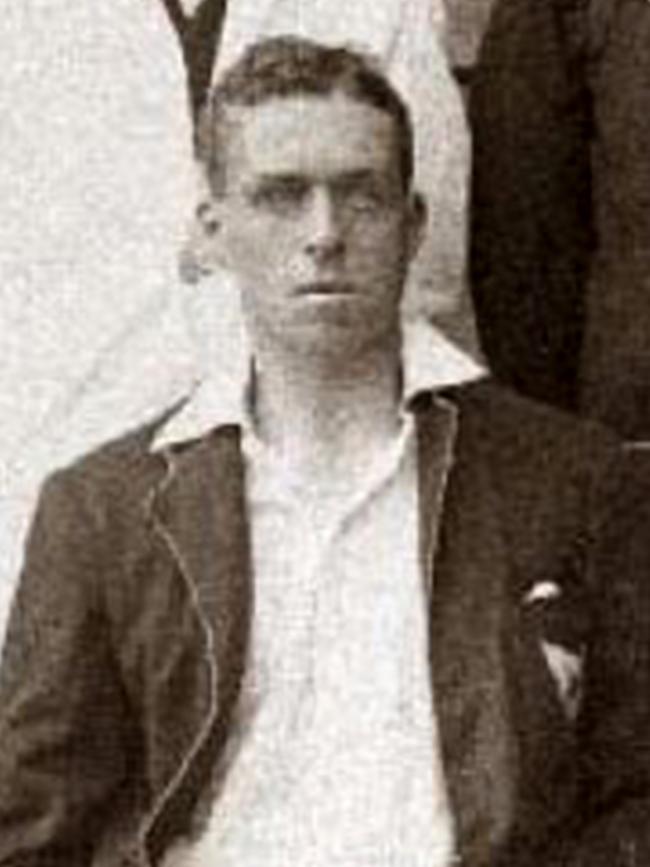
In August 1914 he joined the first contingent of the 9th Australian Field Artillery along with friends from school and sporting teams.
He was wounded in action at Gallipoli on July 13, 1915, when a piece of shrapnel hit him in the mouth. He was treated at Alexandria before returning to his unit in September.
While in Egypt after the Anzacs were evacuated from Gallipoli, Keith was made an acting corporal in February 1916 and then in France two months later he was designated a temporary corporal.
Also while in Egypt he sent reports to the Mercury on football and cricket matches among the troops, including Tasmania’s victory over Western Australia in March 1916.
In May 1916 he was made an officer and given the rank of second lieutenant and transferred to the 1st Australian Field Artillery. He was elevated to first lieutenant in September.
Keith was wounded in action for a second time in November 1916 with a gunshot wound.
Just over a week after returning to his unit, he was asleep in his dugout on New Year’s Eve, 1916, when a shell came through the roof and killed him.
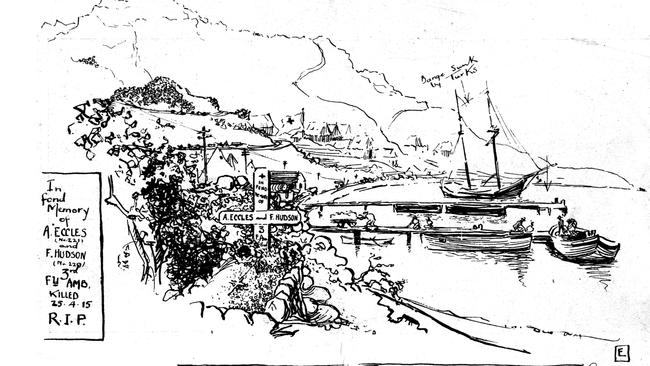
Keith, aged 30, was buried nearby in a small cemetery before later being reinterred in the Guards Cemetery at Lesboeufs, France.
Throughout the war, he continued his sketching and writing, sending home written contributions and drawings for publication in the Mercury and the Tasmanian Mail.
One of his pocket sketchbooks was returned to his family complete with the impression of a bullet — showing he was once hit by a bullet which broke the cover of his sketchbook but did not go right through the whole pad.
Shortly after news of Keith’s death reached Hobart, the father of another soldier wrote to the Mercury: “I refer to Lieutenant Keith Eltham, and I can testify to his manly character and gentlemanly conduct always; always a good sport, and one of the first to enlist.”
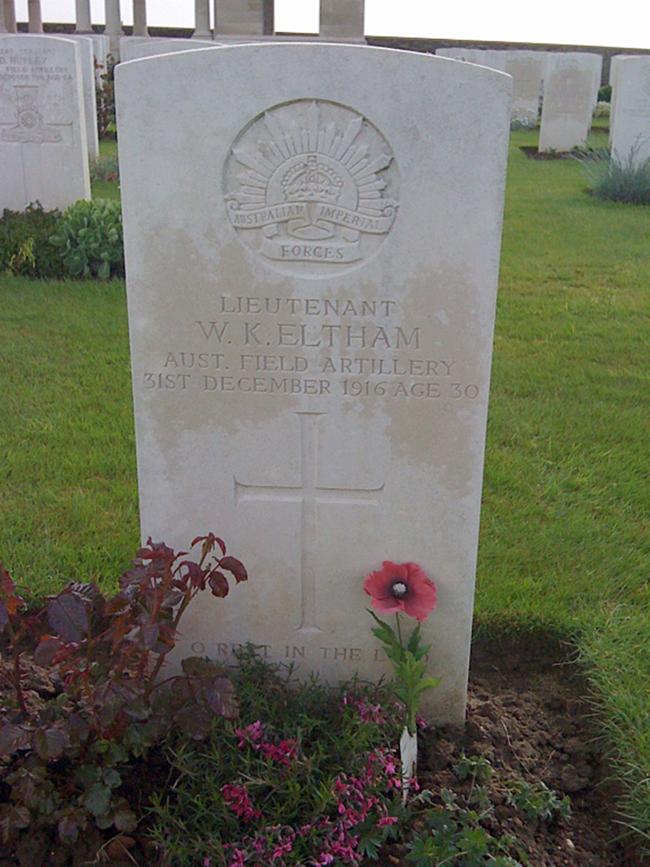
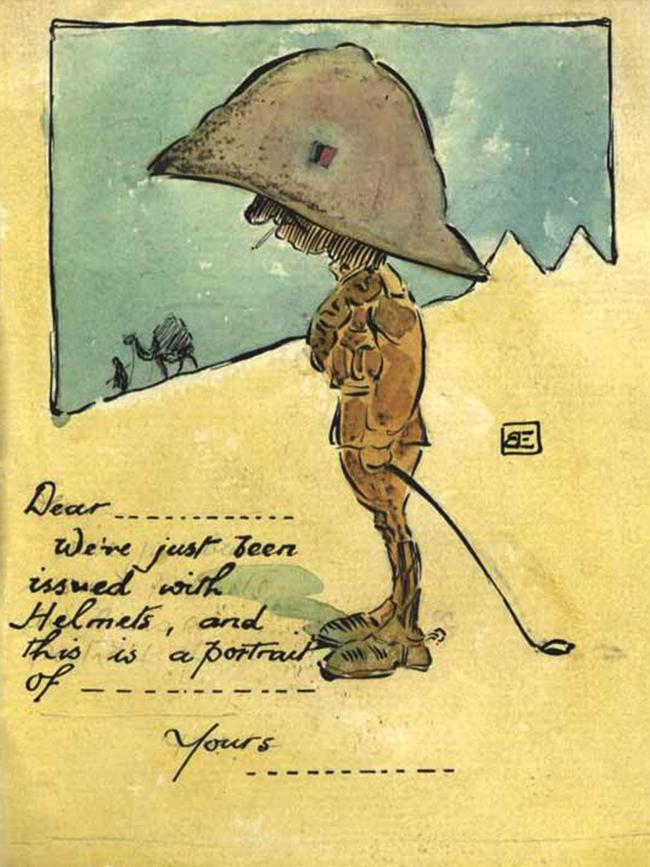
On January 12, 1917, another Hobart newspaper, The Critic, reported that Keith’s death had caused great regret in the community and sympathy was being extended to his parents on the loss of their gallant son.
“The deceased was one of our most prominent cricketers and enjoyed a popularity which only
persons with a pleasing personality can command,” the newspaper said.
“Lieutenant Eltham distinguished himself in the Dardanelles campaign, in which he was wounded. He was looked upon as a remarkably able and efficient officer.
“The flag at the Town Hall was half-masted today to honour the memory of a trusted official, a true comrade, and an heroic soldier.”
Lieutenant William Keith Eltham is remembered at tree 185 on the Soldiers’ Memorial Avenue and on honour boards at the Hobart Town Hall, The Hutchins School and the former St John the Baptist Anglican Church.
The Hobart City Council honoured him on Remembrance Day 2015 when the new sporting pavilion at the Soldiers’ Memorial Oval on the Queens Domain was named after him.
damian.bester@news.com.au


